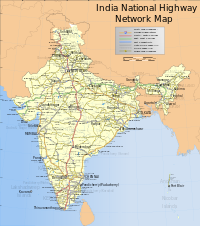Portal:SAARC
|
Bengali, also Bangla (Bengali: বাংলা [ˈbaŋla]) is an Indo-Aryan language of East South Asia, evolved from Prakrit, Pali and Sanskrit. With nearly 200 million native speakers, Bengali is one of the most widely spoken languages of the world (it is ranked between four and seven based on the number of speakers). Bengali is the main language spoken in Bangladesh, and the second most commonly spoken language in India (after Hindi-Urdu). Along with Assamese, it is geographically the most eastern of the Indo-European languages. Owing to the Bengal renaissance in the 19th and 20th centuries, Bengali literature emerged among the richest in South Asia, and includes luminaries such as Rabindranath Tagore, the first Asian to be awarded a Nobel Prize. Like most other modern Indic languages, Bengali arose from the Apabhramsha melting pot of Middle Indic languages, around the turn of the first millennium CE. Some argue for much earlier points of divergence - going back to even 500 BCE, but the language was not static, and different varieties co-existed concurrently, and authors often wrote in multiple dialects. In particular, the eastern region language known as Abahatta (with considerable overlap with Purvi and Magadhi Apabhrangsha), had begun to emerge by the seventh century AD. Hiuen Tsang has noted that the same language was spoken in most of Eastern India. (more...)
Template:/box-header {{ Template:/At a glance }} Template:/box-footer
Avul Pakir Jainulabdeen Abdul Kalam (Tamil: அவுல் பகீர் ஜைனுலாப்தீன் அப்துல் கலாம்) born October 15, 1931, Tamil Nadu, India, usually referred to as Dr. A.P.J. Abdul Kalam ^) was the twelfth President of India, serving from 2002 to 2007. A notable scientist and engineer, he is often referred to as the Missile Man of India for his work and is considered a progressive mentor, innovator and visionary in India. His term as president ended on July 25, 2007. Kalam has received honorary doctorates from as many as thirty universities. The Government of India has honored him with the nation's highest civilian honors: the Padma Bhushan in 1981; the Padma Vibhushan in 1990; and the Bharat Ratna in 1997. Kalam is the third President of India to have been honoured with a Bharat Ratna before being elected to the highest office. He is also the first scientist and first bachelor to occupy Rashtrapati Bhavan. Kalam's probable views on certain issues have been espoused by him in his book "India 2020" where he strongly advocates an action plan to develop India into a knowledge superpower and into a developed nation by the year 2020. Kalam is credited with the view that India ought to take a more assertive stance in international relations; he regards his work on India's nuclear weapons program as a way to assert India's place as a future superpower. Referred to as the "People's President", Kalam is often considered amongst India's greatest presidents, going on to win a poll conducted by news channel CNN-IBN for India's Best President. (more) عربى (Arabic) • অসমিয়া (Assamese) • भोजपुरी (Bhojpuri) • বাংলা (Bengali) • ইমার ঠার/বিষ্ণুপ্রিয়া মণিপুরী (Bishnupriya Manipuri) • މަހަލް (Dhivehi) • ગુજરાતી (Gujarati) • हिन्दी (Hindi) • ಕನ್ನಡ (Kannada) • कॉशुर (Kashmiri) • മലയാളം (Malayalam) • मराठी (Marathi) • नेपाली (Nepali) • ଓଡ଼ିଆ (Oriya) • پښتو (Pashto) • فارسی (Persian) • ਪੰਜਾਬੀ (Punjabi) • संस्कृत (Sanskrit) •Santali (Santali) • सिनधि (Sindhi) • தமிழ் (Tamil) • తెలుగు (Telugu) • اردو (Urdu) • සිංහල (Sinhala) Tashichoedzong, the fortress monastery on the northern edge of the city, built in the 17th century, has been the seat of Bhutan's government since 1952. The city sprawls across the western slopes of the Wang Chhu river valley, with a government quarter centred on Tashichoedzong. Rapid expansion following the pattern of rural exodus has resulted in considerable rebuilding in the city centre and mushrooming suburban development elsewhere. Norzin Lam, the recently upgraded main thoroughfare, is lined with shops, restaurants, retail arcades and public buildings. Elsewhere, there is a mix of apartment blocks, small family homes and family-owned stores. By regulation, all buildings are required to be designed in traditional style with Buddhist paintings and motifs. Dechenphu, Tango and Cheri monasteries, and Dechenchoeling Palace, the official residence of the King, are located to the north of the city. (more)
|
|||||||||||


